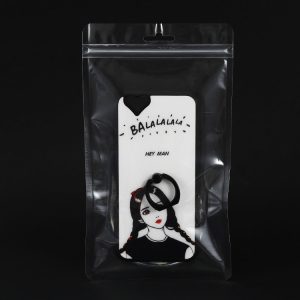Selecting the right plastic pouch involves considering various factors to ensure it meets your specific needs and requirements. Here are some key considerations to help you make the best choice:
- Type of Plastic Material: There are different types of plastic materials used for pouches, such as polyethylene (PE), polypropylene (PP), polyester (PET), and more. Each material has its unique properties, including barrier properties, flexibility, and environmental impact. Choose a material that suits the product’s characteristics and ensures product safety and freshness.
- Barrier Properties: If your product is sensitive to factors like moisture, oxygen, or light, consider pouches with enhanced barrier properties. High barrier pouches will help extend the shelf life and maintain product quality.
- Pouch Size and Shape: Determine the appropriate size and shape of the pouch that accommodates your product volume and fits well on store shelves or in shipping containers. Customizable pouch shapes are available, allowing you to stand out from competitors.
- Closure Mechanism: Consider the type of closure you need for your product. Pouches may come with zippers, spouts, or heat-sealed openings. Resealable options are beneficial for products that are intended for multiple uses.
- Printing and Branding: Assess the printing options available for branding and product information. Clear pouches allow the product to be visible, while custom printing can enhance brand recognition and appeal.
- Product Visibility: For products where visual appeal is essential, opt for transparent or semi-transparent pouches. On the other hand, if product protection or UV resistance is crucial, consider opaque or colored pouches.
- Product Compatibility: Ensure that the plastic material is compatible with your product. Some products may react with specific plastics, affecting taste or safety.
- Environmental Impact: If sustainability is a concern, look for pouches made from recyclable or compostable materials. Biodegradable options can also be considered.
- Regulatory Compliance: Ensure that the chosen pouch complies with relevant regulations and standards for food contact materials, especially if you are packaging food or beverages.
- Packaging Volume and Cost: Evaluate the cost-effectiveness of the pouch based on your packaging volume. Consider bulk purchasing options to reduce costs.
- Packaging Equipment: Check if the chosen pouch is compatible with your packaging equipment, especially if you use automated filling and sealing machines.
- Transportation and Storage: Consider the pouch’s durability and resistance to punctures or tears to ensure it withstands the rigors of transportation and storage.
- Consumer Convenience: Think about the end-user experience. Easy-to-open features and ergonomic design can positively impact consumer satisfaction.
By carefully considering these factors, you can choose the right plastic pouch that best suits your product, brand, and environmental goals. Keep in mind that the market for packaging materials is continually evolving, so staying informed about new innovations and materials can lead to more sustainable and efficient packaging solutions.








